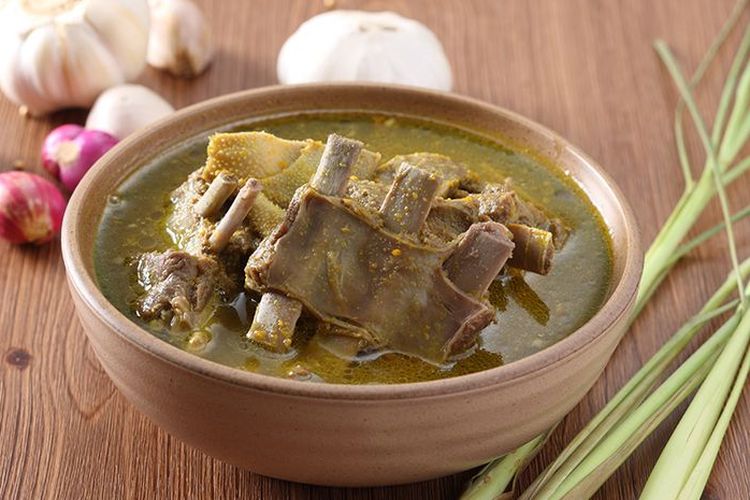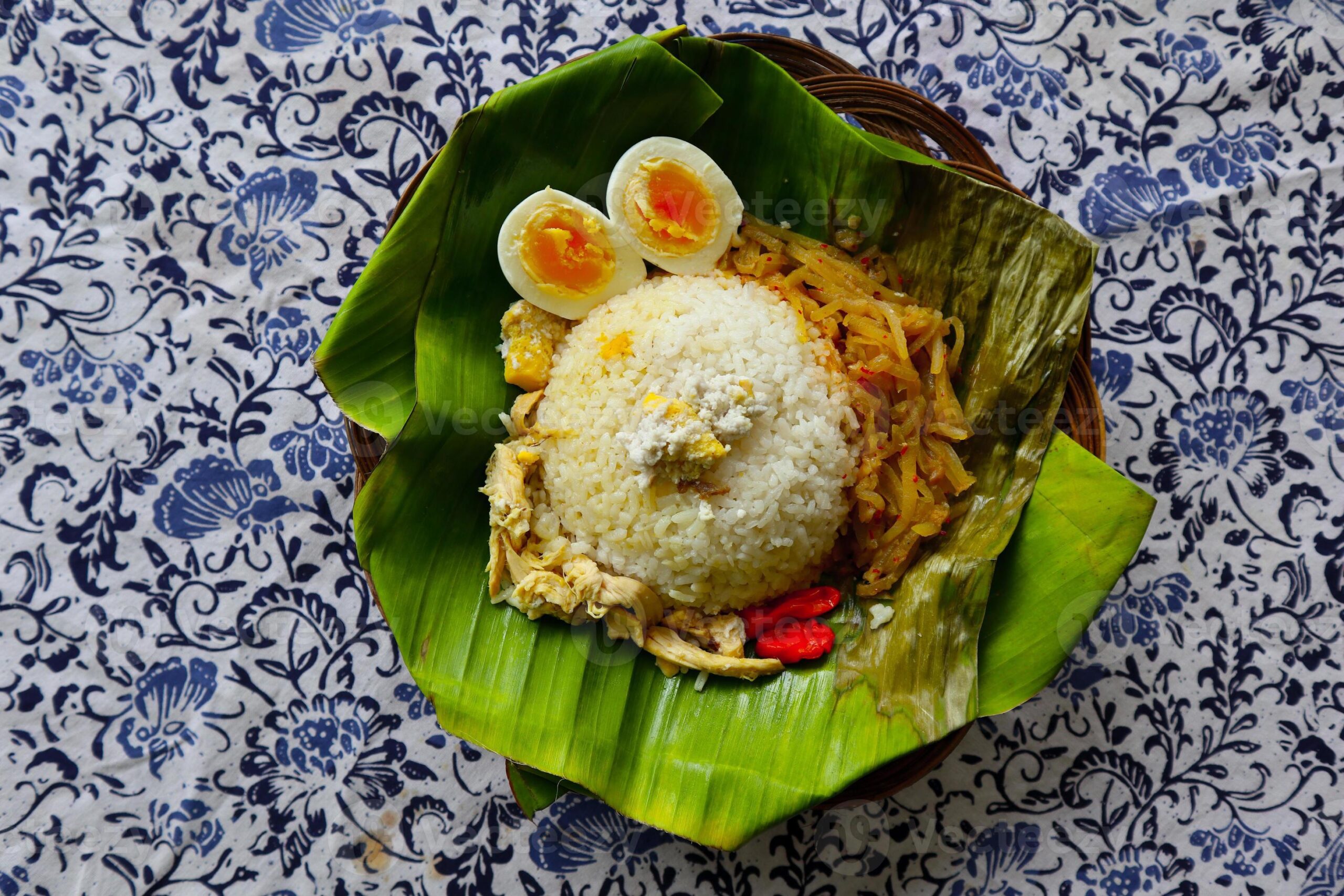
Of course. Here is a 1,200-word article about Nasi Liwet from Solo.
Nasi Liwet Solo: A Savory Symphony of Javanese Heritage on a Banana Leaf
In the quiet, pre-dawn hours of Surakarta, a city affectionately known as Solo, a familiar and beloved aroma begins to waft through the streets. It’s a scent that is both comforting and complex—the fragrant perfume of pandan and bay leaves mingling with the rich, creamy essence of coconut milk, all gently simmering over a low flame. This is the scent of Nasi Liwet, a dish that is not merely food, but the very soul of Solo served on a humble banana leaf. More than just a meal, Nasi Liwet is a culinary ritual, a taste of Javanese history, and a testament to a culture that values grace, community, and profound flavor in equal measure.
To understand Nasi Liwet Solo is to understand the Javanese philosophy of harmony. Unlike its more widely known cousin, Nasi Uduk from Jakarta, where the rice is first half-cooked and then steamed, Nasi Liwet employs a unique, one-pot cooking method from which it derives its name. The term liwet refers to the process of cooking rice with water, coconut milk, and spices in a single pot until all the liquid is completely absorbed. This technique, traditionally done in a bronze or clay pot (kendil), allows each grain of rice to become thoroughly infused with the savory, aromatic broth, resulting in a dish that is exceptionally flavorful and moist from its core.
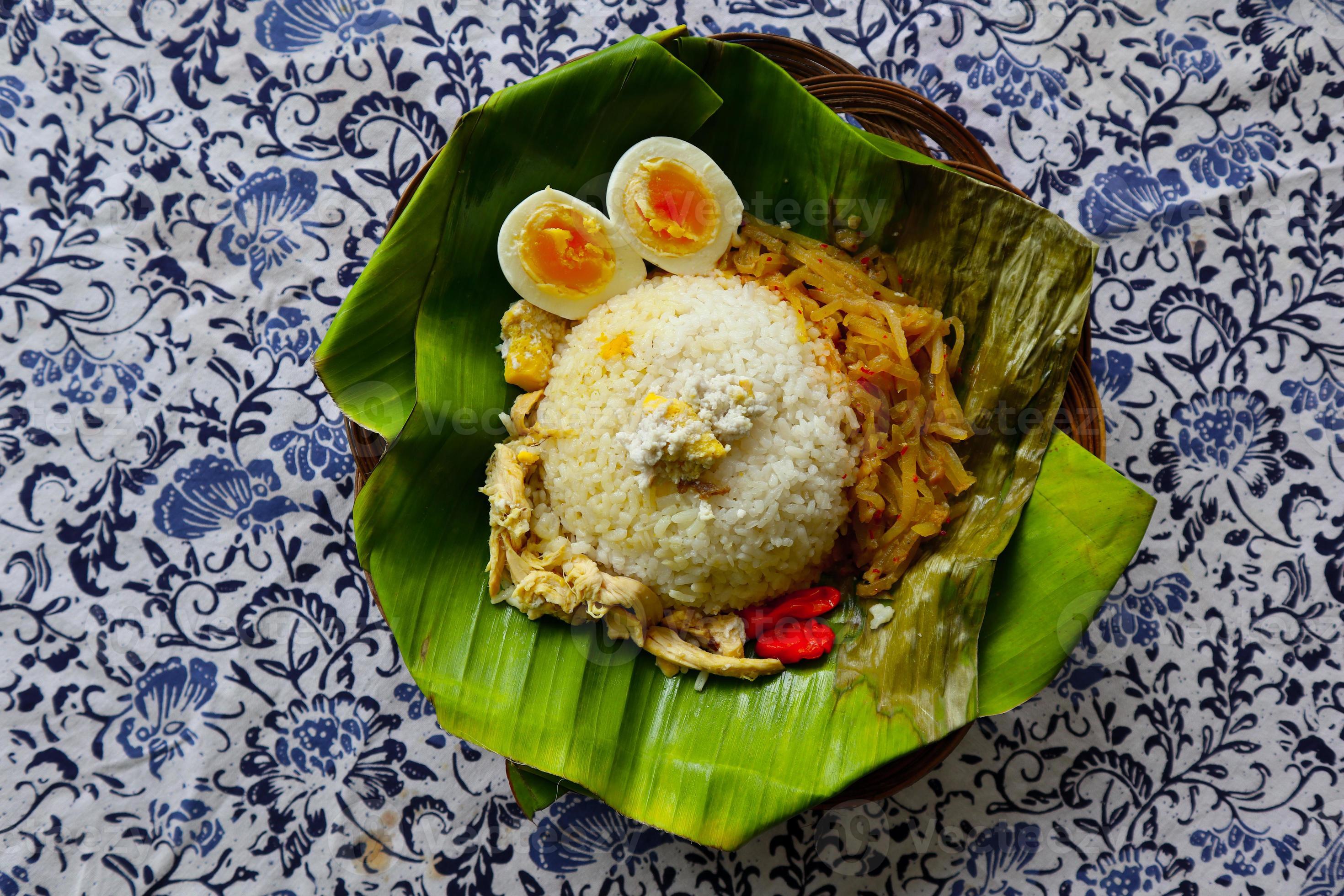
The magic begins with the rice itself, known as nasi gurih (savory rice). Long-grain rice is washed and placed in the pot with a generous amount of thin coconut milk, which forms the base of its flavor. Into this milky bath go the essential aromatics: bruised lemongrass stalks, fragrant salam leaves (Indonesian bay leaves), and a few knots of pandan leaf. As the mixture slowly comes to a simmer, the kitchen fills with a perfume that is quintessentially Southeast Asian. The rice is cooked gently, stirred occasionally to prevent scorching, until it blossoms into a fluffy, fragrant mound where every grain carries the subtle, layered notes of the spices.
But the rice, as magnificent as it is, is only the foundation. A true serving of Nasi Liwet Solo is an artful composition of several key components, each prepared with meticulous care, that come together to create a symphony of textures and tastes.
First is the Ayam Suwir, or shredded chicken. Typically, a whole chicken is gently poached in a coconut milk broth seasoned with garlic, shallots, coriander, and galangal, similar to the preparation for Opor Ayam (Javanese white chicken curry). The chicken becomes incredibly tender, and once cooked, it is shredded by hand and often mixed back into a portion of its savory cooking liquid. The result is a pile of moist, succulent chicken that is mildly spiced yet deeply flavorful, providing the primary protein of the dish.
Next, and perhaps the most visually striking element, is the Telur Pindang. This is no ordinary hard-boiled egg. It is a slow-braised masterpiece, simmered for hours in a concoction of water, soy sauce, shallots, garlic, galangal, and, most importantly, teak leaves or shallot skins. This prolonged bath gives the egg white a beautiful marbled, dark brown pattern and imbues it with a unique sweet-savory flavor that permeates right through to the yolk. The texture is firm yet tender, and its gentle sweetness provides a perfect counterpoint to the savory rice.
Providing a spicy and refreshing contrast is the Sayur Labu Siam, a vibrant, light curry made from chayote squash. The chayote is cut into matchsticks and cooked in a thin, spicy coconut milk sauce, often tinged red with chili. It remains slightly crisp, adding a crucial textural element to the otherwise soft components of the meal. Its mild heat cuts through the richness of the coconut milk in the rice and chicken, cleansing the palate and preparing it for the next bite.
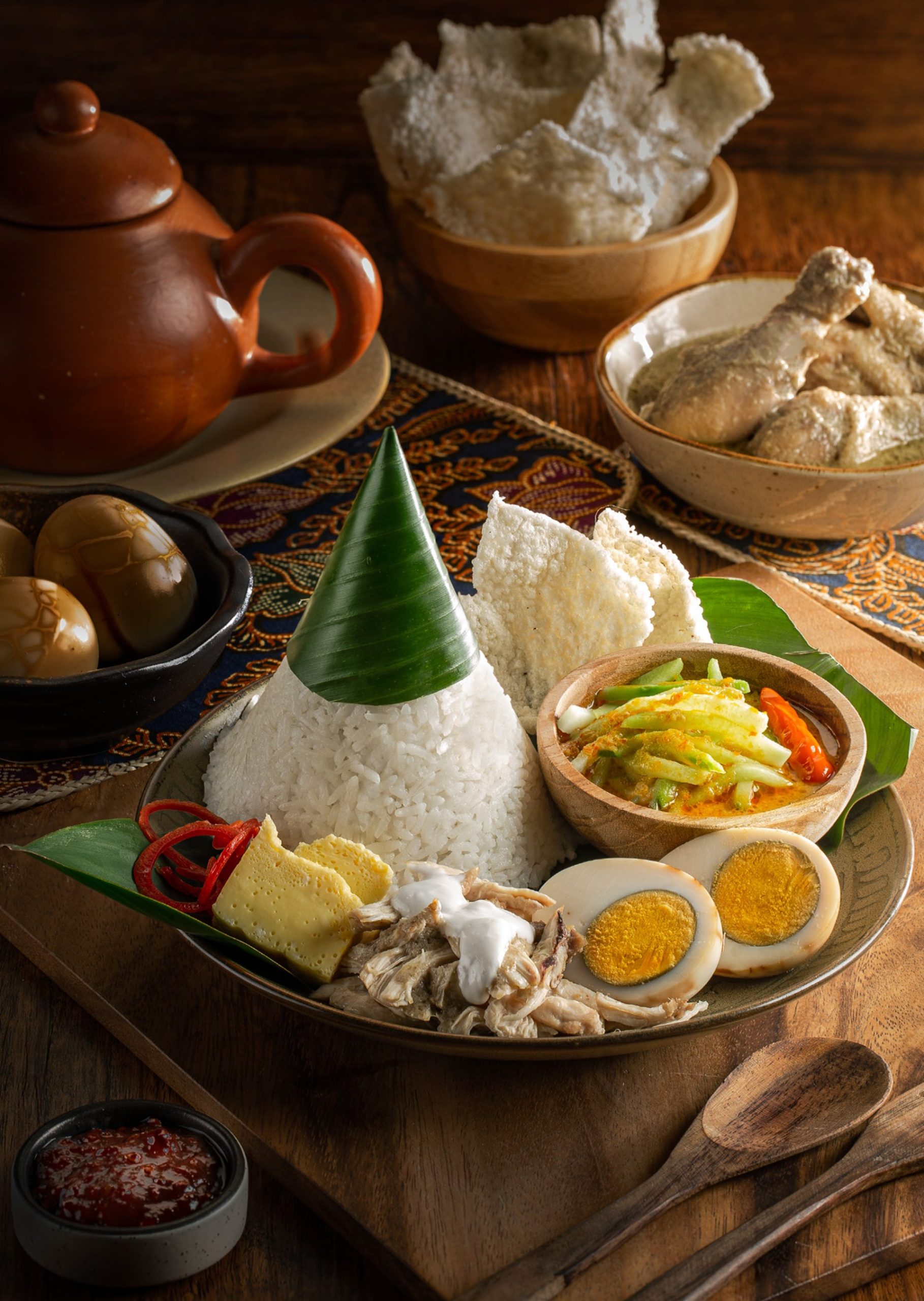
The true crown jewel of Nasi Liwet Solo, however, and what unequivocally sets it apart from any other rice dish in Indonesia, is the Areh. This is the secret to its luxurious, unforgettable richness. Areh is made from the thickest part of the coconut cream (kanil), which is boiled down until it thickens into a savory, unctuous, almost custard-like sauce. There are two types: a plain white areh and a yellow areh, colored and flavored with turmeric. A generous spoonful of this velvety, concentrated coconut cream is drizzled over the entire assembly just before serving. Its intensely savory, slightly salty, and fatty profile melts into the warm rice, binding all the flavors together in a blanket of pure indulgence.
The entire ensemble is traditionally served on a pincuk—a folded banana leaf that acts as both a plate and a spoon. This isn’t just for aesthetics; the warmth of the food releases the leaf’s subtle, earthy fragrance, adding another layer to the sensory experience.
The origins of Nasi Liwet are deeply rooted in the agrarian culture of Central Java. It began as a humble village dish, a practical way for families to create a flavorful and complete meal using simple, readily available ingredients. It was often prepared for selametan, a communal feast held to ask for blessings, celebrate a harvest, or commemorate an important life event. In this context, the dish symbolizes gratitude, togetherness, and the sharing of sustenance.
Over time, its popularity grew, and it journeyed from the villages to the heart of the Surakarta Kraton (royal palace). The refined palate of Javanese royalty embraced the dish, and it became a staple within the palace walls, solidifying its status as a culinary icon of Solo. Today, Nasi Liwet has transcended all social strata. It is a food for everyone.
Experiencing Nasi Liwet in Solo is a ritual in itself. You can find it sold by ibu-ibu (elderly women) who set up their small makeshift stalls on sidewalks at the crack of dawn, their large pots of rice kept warm over charcoal braziers. For many locals, starting the day with a pincuk of Nasi Liwet is a cherished tradition. At night, the city comes alive with lesehan warungs—eateries where customers sit on woven mats—that specialize in the dish. Places like the Keprabon area are legendary, with vendors like the famed Bu Wongso Lemu having served Nasi Liwet for generations, becoming institutions in their own right.

The act of eating it is a process of discovery. The first spoonful might be mostly the savory rice. The next, you ensure a bit of shredded chicken and spicy chayote are included. Then you break into the sweet telur pindang, its yolk mixing with the rich areh and the fragrant rice. Each bite is a different combination, a new harmony of sweet, savory, spicy, and creamy. It’s a dish that demands you slow down, sit, and savor.
In the modern era, Nasi Liwet remains an unwavering symbol of Solo’s identity. It is a source of immense local pride and a powerful draw for tourists seeking an authentic taste of Javanese culture. It stands as a delicious counter-narrative to the fast-paced, globalized food scene, reminding us of the profound beauty in traditional, slow-cooked meals made with intention and heritage.
To eat Nasi Liwet in Solo is to do more than just fill your stomach. It is to partake in a living history, to taste the grace of the Javanese court, the warmth of its villages, and the communal spirit of its people. It is a savory symphony on a banana leaf, a dish that captures the gentle, complex, and utterly satisfying soul of a city that continues to play the soulful melody of Java.

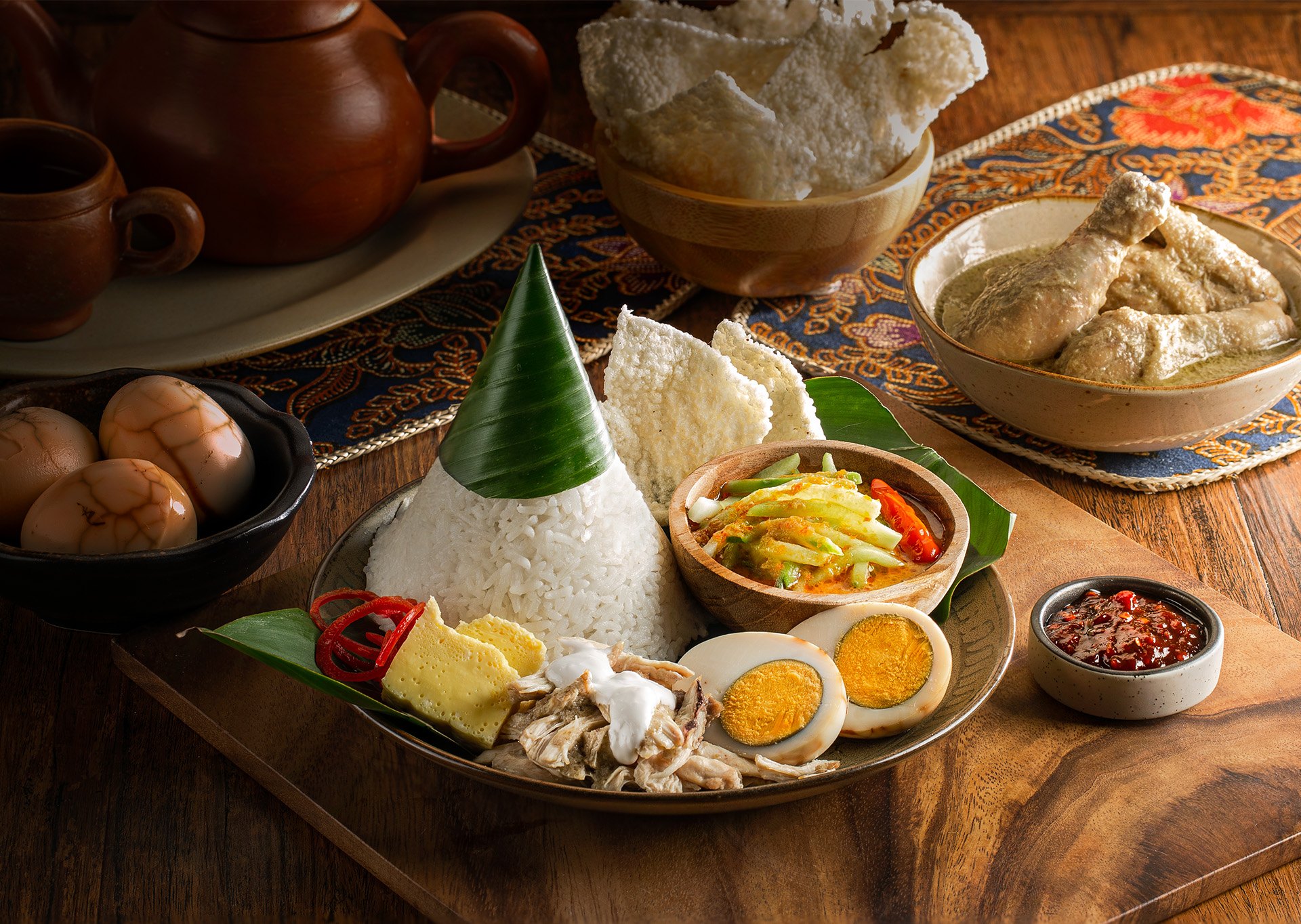

Article about Nasi Liwet from Solo. pictures collections gallery
Article about Nasi Liwet from Solo. is a nice pictures and stock photo for your computer desktop or your smartphone device (ipad, tablet, blackberry, iphone, and other device) and also for your personal use. Free available for desktop wallpaper or additional image collections for your all needs. And was uploaded by admit at date July 1, 2025. You can download it in your computer by clicking download button to save image... have nice day and have fun guys..
This 1 image in featured post from 0 Photos/images Gallery and awesome picture selections about Article about Nasi Liwet from Solo. is available to download. "Download & Save" images/pictures/wallpapers now and this Is one of the post that listed in packed to Category is Foods directory, with image dimension/resolution size is 2560 × 1707 px and size image/picture file is 739 KB with original link post ID is : https://powae.pw/of-course-here-is-a-1200-word-article-about-nasi-liwet-from-solo/. Get download/save images in post and gallery, "download" images or "preview" it on a bigger image for spesification sample in Large size (full attachment size) here : [Download & View to Large size]. Just Simple way, in thumbnail or in Gallery. *Click images to view Large Size.We collect this wonderful image from online and choose one of the best for you. Pictures collection that posted here was carefully chosen and published by author after choosing the ones which are best among the others. So, ultimately we make it and here these list of best image for your inspiration and informational reason regarding the Article about Nasi Liwet from Solo. as part of blogsite exclusive updates collection. So, take your time and find the best informations and pictures posted here that suitable with your needs and use it for your own collection and personal use. About Image information: Image has been submitted and You are able to give your opinion as evaluations to our web site value.
Don't forget to comment if you interest with this images, you can share this post to social media like as facebook, twitter, google+, pinterest, stumbleupon, and more. just click social media buttons for share this post Article about Nasi Liwet from Solo. Now. :)
Thanks for your visit, I hope you happy come to opo wae, wis opo wae, and get what you're looking for. And hope sometimes you will come back again here. All you need to do is help us develop by discussing this Article about Nasi Liwet from Solo. if you like it "leave your comment". have fun, Thank you.



